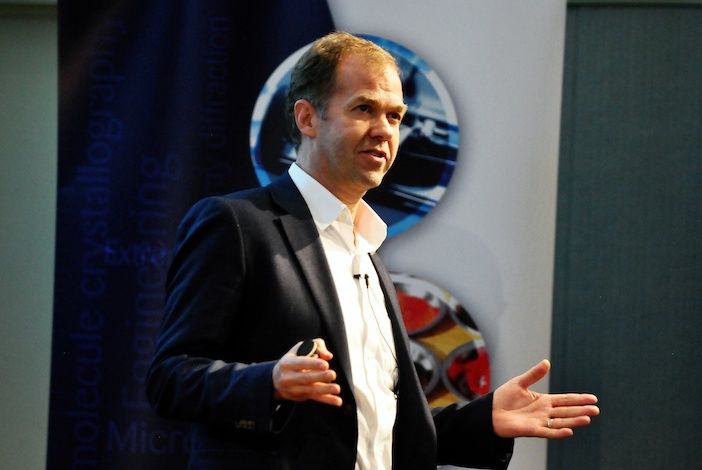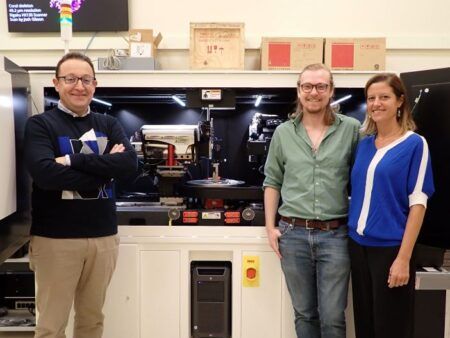by Professor Peter Lee, from University College London
I’ve spent 30 years optimizing materials for use in aerospace and automotive applications, looking at how we design, make and use them. My latest research focuses on the additive manufacturing (AM) of alloys for use in aerospace applications. We’ve received a £2.6 million (US$3.2 million) grant for the next ten years which will enable us to develop AM alloys for industrial applications. We’re using one of the world’s most advanced tools to help investigate the challenges associated with AM alloys – Diamond Light Source the UK’s National synchrotron science facility at Harwell near Oxford. The synchrotron lets us see inside the alloys as the AM machine makes components.
The synchrotron emits electrons at the speed of light and bends them using electromagnetics to create a continuous beam of light at wavelengths from near infrared to hard x-rays. At the point where the beam of electrons bends it gives us a flux of light up to 10 million times brighter than the sun.
During the AM process we don’t know exactly what is going on at a microstructural level in the alloy as it solidifies. This is important as an alloy’s strength is dependent on the microstructures inside it. So, the research team is using the hard x-rays from the synchrotron to get a series of 3D images about how an alloy takes shape as a 3D printed component builds up. Up until now we’ve only been able to look at the microstructure of a material after it has been produced. The synchrotron enables us to learn how to tune a material inside itself, as we are building it.
We use cameras that capture 10,000 frames a second – each frame is 1MB, so we accumulate 10TB a day, a massive amount of data. We are developing characterization algorithms to detect microstructural features, such as grain size, porosity or cracks. We are coding this into artificial intelligence to automate AM processes and creating models so components can be analyzed prior to undergoing the AM process. One of our main aims is to produce a closed feedback loop control algorithm. This means when a defect like a pore happens during manufacturing, the AM machine can automatically take action to rebuild. If it can’t be rebuilt we calculate the reduction in strength and scrap it if required.
In our test-AM machine there is also an infrared camera and optical cameras that we calibrate by correlating the synchrotron’s imaging to the instruments. These highly-calibrated instruments may one day be integrated into other AM machines. We are also researching how to predict the lifetime of an AM-made component to potentially enable component-specific FAA approvals.
The results of our work is already enabling companies to optimize their processes, such as devising guidelines for recycling the powder. Our research can help calibrate the metrology and NDT aerospace engineers are doing everyday. It is helping to develop in-situ repair technology for components like blisks in engines and enabling AM to produce shapes that were previously impossible to make. Using the synchrotron we can see inside the shape to assess the individual stresses as it is being made inside the product.





